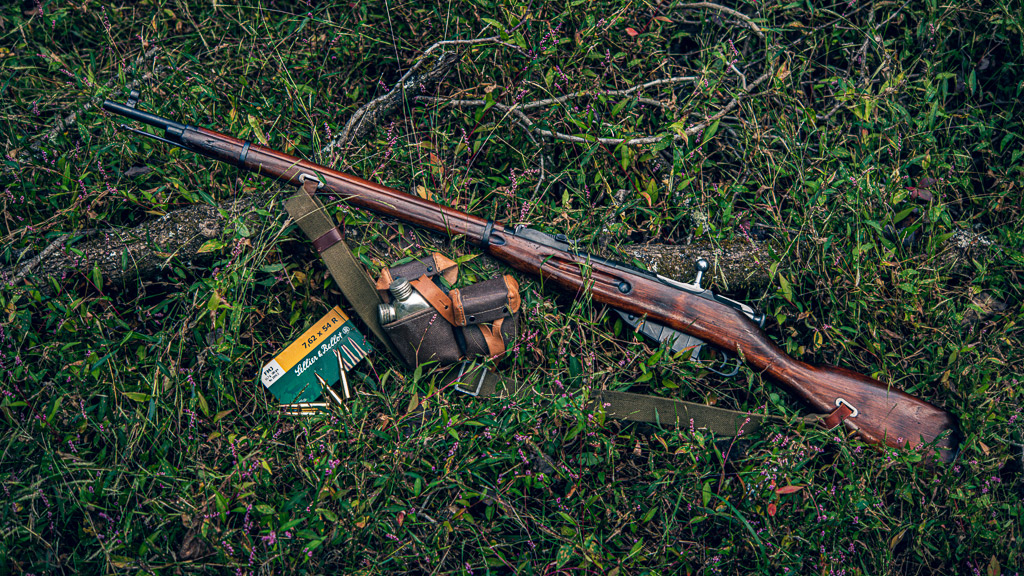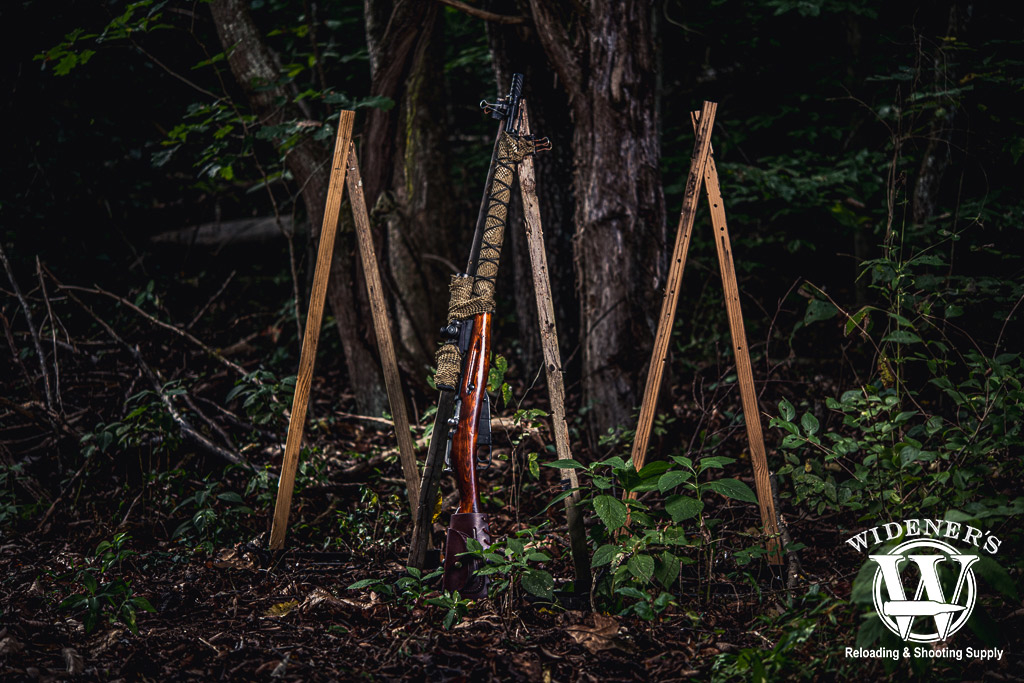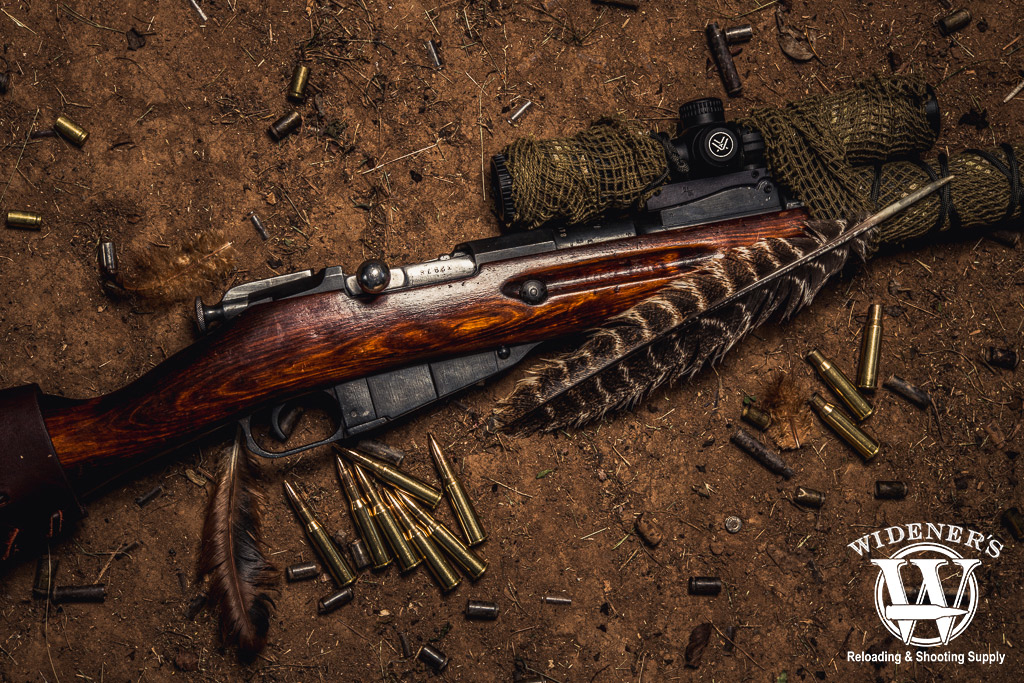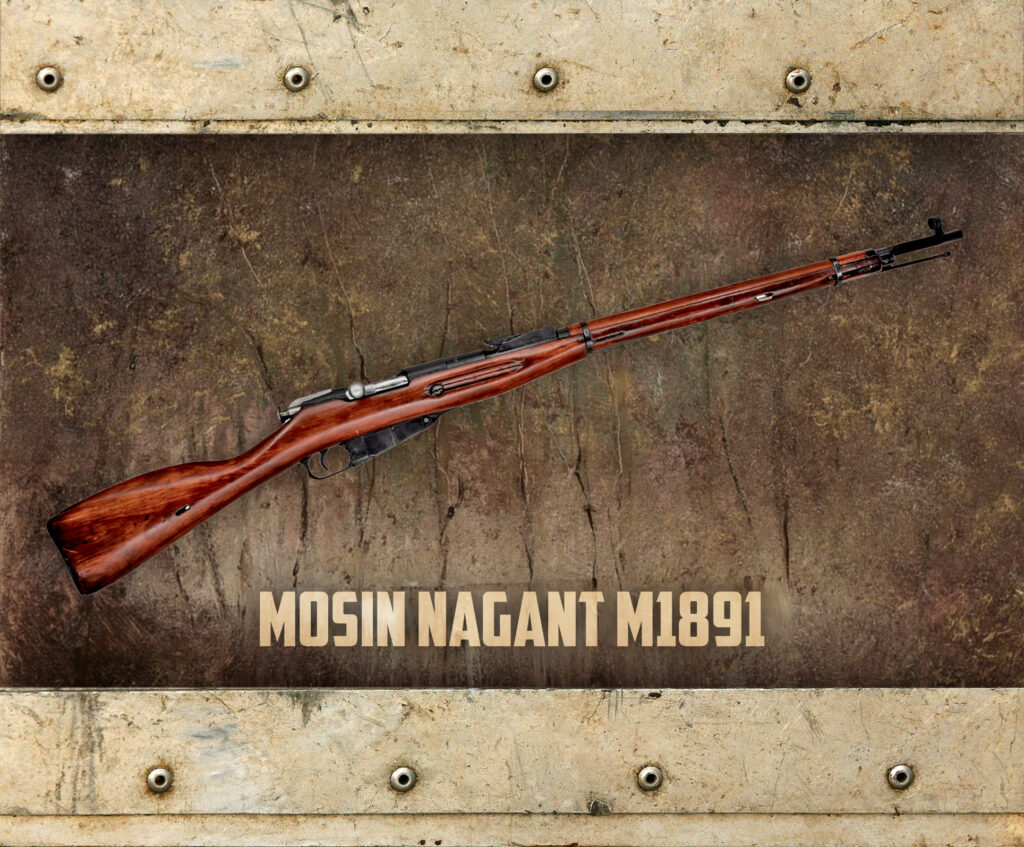

On the American market, the 1891 Mosin Nagant has gone from bargain beater to a prized mil surplus possession. All in the span of a few, perplexingly short years. In some ways, the astronomical prices of Garands, Mausers, and Enfields generated an increased demand for WWII-era pieces by younger collectors. The Mosin fell at a great price point for them.
Another explanation is perhaps the supplies of the most mass-produced bolt action service rifle in history are finally drying up. No matter the explanation, the M1891 Mosin Nagant has proven to be remarkably resilient. Coming from a country that prized itself on keeping things simple, yet dependable for over a century. It’s safe to say they succeeded.
Article Index:
Mosin Nagant History

The Mosin Nagant is one of the most mass-produced rifles in history. Shoot one and you’ll know why.
Winston Churchill supposedly said that “Russia is a riddle wrapped in a mystery inside an enigma.”
The vast lands of the Tsars stretch over 1/6th the world’s landmass encompassing dozens of cultures. The lands were the primary invasion route of Asiatic hordes moving west since the dawn of recorded history.
Small wonder they have a slightly xenophobic outlook with a strong penchant for holding on to tradition and trusted, robust tools. From autocratic rule to farm tractors, Russians prove time and again that “if it isn’t broke, it doesn’t need fixing.”
Actually, they’ve taken it further. “No matter what’s wrong with it, if it still works, it ain’t broke!” Proof of these adages is offered up in the trusty 1891 Mosin Nagant Rifle.
The Single-Shot Replacement
The 1880s saw global advances in the development of martial arms. New weapons focused upon smaller diameter projectiles and smokeless powder to achieve greater velocities. The movement away from single-shot rifles also began after the fact for the many rank and file who faced off against modern repeaters. Such was the case in the Russo-Ottoman War 1877-78. The Russians’ attempts to seize Istanbul (Tsarsograd) were stymied, in part, by superior firepower from the Turks. At that war’s conclusion, the Russians realized their single-shot rifles needed to be replaced.
With the dawn of the 20th century looming, all the great powers were holding arms tests. They needed weapons to give them the upper hand on the battlefield. Also, watching regional conflicts to observe how new equipment and old tactics fared in the field.
With the possible exception of the Crimean War, there had been no major long war since the Age of Napoleon. Regional and colonial disruptions, such as in India, Africa and even in the US, proved otherwise. These were frequent affairs in which “civilized” powers went against the natives with less modern arms. This led to a somewhat lackadaisical approach to widespread arms improvements by militaries.
Further, a relative détente had settled over Europe by 1871. Largely thanks to the designs of Otto von Bismarck of the newly created German Empire (Second Reich). Any major conflict among the recognized European powers (such as between Russia and Turkey) was kept in check from lasting long or spreading by a series of alliances designed to restore peace. As always with war and peace, it was a short-lived endeavor.
Mosin Rifle Design
In the 1880’s, Russia remained intent on a warm water port on the Black Sea. They required unhindered access through the Dardanelles to the Mediterranean. This meant continuing a centuries-old animosity with the Turks. While the 1878 conflict liberated Bulgaria from the Ottomans, it still left access out of the Black Sea blocked. Russian casualties in that conflict demanded a new rifle. While the Russians adopted single-shot Berdan rifles to replace muzzleloaders, they clearly needed if they hoped to match firepower in any future conflict.
In 1882, Russia founded a commission to find a new design as well as consider models of other nations. This was to be Russia’s first, small-bore, smokeless powder firearm. It was clear from the start, even with foreign models present, the Russians wanted a domestic design.
Of the contenders who made it to the last round of tests in 1889, the two most pertinent were Captain Sergei Ivanovich Mosin of the Imperial Russian Army and a Belgian designer named Leon Nagant. Mosin submitted a .30 caliber design and Nagant contributed a .35 caliber model.
Most found Mosin’s machining crude and unreliable. He admittedly had meager resources, though his design had merits. Nagant’s submission was overly complicated. You’d need specialized training and tools to disassemble it. If you’re familiar with field maintenance, let alone Russian and later Soviet designs, you know that’s an extremely unpopular set of traits for a rifle.
The commission held a runoff trial and accepted Mosin’s improved rifle. Albeit, with a few modifications “borrowed” from Nagant’s design. These mods included an attached spring-loaded follower and an “interrupter” to prevent double feeding. This led to some embarrassing fiduciary quarrels. Nagant believed he was entitled to the Commission’s bounty and took several more years to settle.
A Rifle With No Name
The new rifle was designated the 3 Line Rifle Model 1891. The name Mosin, much less Nagant, was never associated with it within Russia where it and successive models were labeled by their model or model year suffix. For example Dragoon, 91/30, M38, M48, etc.
Similarities among rifle designs of this era are inescapable. The M1891 clearly combined features, either by happenstance or discrete design, with its international competitors. Interchangeable bolt heads, like the Lee-Enfield – sensible as both use rimmed rounds. Dual frontal locking lugs like the Mauser. Spring-loaded extractor and 90 degree bolt throw also like the Mauser. A bolt handle and receiver cuts like the Manlicher. However, a two-piece bolt body for ease of maintenance and a specialized stripper clip proved to be proud national contributions.
Mosin Nagant Ammo: 7.62x54R

The rimmed 7.62x54r is a cartridge that was developed in 1891 in Russia and is still in use today.
Simultaneous to the rifle development, the Russians pioneered a small-bore, smokeless cartridge, the 7.62x54R (R for Rimmed, not Russian). Designed to meet or exceed contemporary cartridges. It ultimately delivered performances comparable to the yet-to-be-released .30-06 Springfield. This allowed infantrymen to engage targets accurately at increased ranges. An undeniable advantage on the Russian Steppes. Though, somewhat worthless (not worthless) for close-quarters combat.
The bore diameter became the standard of all Russian small arms until the end of World War II (7.65×54, 7.62x38R, 7.62×25, 7.62×39). Like many of the new smokeless rounds, it loaded a rounded, hunter or “jaeger” bullet. It quickly followed the trend to pointed or “spitzer” bullets by 1908.
Mosin Nagant At War
World War I
The world considered Tzarist Russia one of the Great Powers largely due to its size rather than its modernity. At the start of the 20th century, it was experimenting with modernization while trying to maintain a feudalist society. The result was pockets of industry and modern conveniences in vast stretches of seemingly medieval culture. This left social and economic contradictions that the central government only treated with centuries-old autocracy: trading space for time.
This shifted in the 1890’s as Germany’s Kaiser Wilhelm II dismissed Bismarck. He began making his neighbors nervous with declarations of his nation’s need for “breathing room.” One result of this was a Russo-French alliance. Laying the groundwork for the increasingly inevitable wackiness unleashed at the start of the Great War in 1914.
In the past when invaders stormed Russia, this worked well to her advantage (and did again in 1941-1945). If she was the aggressor against a modern equipped nation, then she became an unwieldy mass that often could not get out of its own way. Add to that, an industry that could not adequately equip the waves of conscripted and undertrained soldiers. The situation was ripe for unintended change.
To make matters worse, before the Great War broke out, Russia was already in a vulnerable position. Courtesy of the humiliation of the Russo-Japanese War and fall out from the Bosnian Crisis of 1908. Her industry had not yet caught up to the other major powers competing in the first modern arms race. Nevertheless, when it came time to answer a public challenge to her commitment to pan Slavism, pride and arrogance took the place of pragmatic reasoning.
The Great War Begins
Surprising mobility followed Russia’s declaration of war on the Central Powers. She grabbed large tracts of land in Eastern Germany. When the German Army threw up a dedicated defense, it threw back the Russians. Stopping them in their tracks. For the following three years her only solution was to throw waves of under-equipped infantry against well-placed machine guns and artillery. Russia would then withdraw under concerted counterattacks.
Through it all, the Russian industry remained ill-prepared to keep up with the demands of modern war. Russia ordered over three million 1891 rifles from the US. Remington and Westinghouse handled the manufacturing of those firearms. So where did they end up?
The Great American Mosin?
Additionally, Russia ordered a strange hybrid from Winchester in the form of the 1895 Musket. Winchester manufactured the rifle with minimal retooling. This model saw just under 300,000 produced. It is a holy grail for lever gun and military enthusiasts. It looks every bit the illegitimate love child between an 1891 “Mosin” and 1895 Winchester chambered in 7.62x54R.
Despite their desperate need, Russian inspectors kept stalling on payments and acceptance of the American-made rifles. This led to precious few making it through to see service for the Tzar. The bulk of the orders remained in the US and when the Russian Revolution broke out the orders were either flat out canceled or defaulted.
Ironically, many of the US rifles that did make it to Russia went with the Allied expeditionary forces. They were sent to fight the Bolsheviks at places like Vladivostok and Murmansk. The rest remained in the US or were sold, lent, or leased out as surplus after the war. They saw action in hot spots like the Spanish Civil War. Today those US-marked rifles fetch high prices from collectors.
Russian Civil War
In 1924 the Bolsheviks won the Russian Civil War that broke out after their 1917 withdrawal from World War I. The Russians re-evaluated their rifle in terms of field use as well as industrial simplicity. The massive industrialization that characterized the Stalin period was still a few years off. Uncomplicated interchangeability was already a key concept of the communist regime. The Dragoon variant was adopted with a few modern alterations. Bolt construction, a simplified rear sight, and a hooded post front sight instead of the blade. It was approximately 2” shorter in the barrel than the old Infantry model. Conversion to this new standard, known as the model 91/30 from all available stocks was a simple matter.
World War II
The Mosin earned its stripes on the eastern battlefields of WWII. Despite the exaggerations of its greatness by the Russian propaganda machine during the war, it truly was a feared weapon by combat soldiers on the wrong side of its barrel. The sniper duels between Russian and German troops armed with Mosins and K98 Mausers are the stuff of legends. The toughness of the M91/30 Mosin Nagant rifle on the battlefield gave much-needed morale to the Russian troops. The rifle itself became a symbol of unification during the battles of Operation Barbossa with the German invasion of Russia in 1941.
The Soviet sense of pride and nationalism in WWII hinged on the greatness of its battle rifle. Like most .30 caliber rifles, the Mosin kicks hard and delivers its payload with devastating force. Despite great casualties, the Russians were able to fight off a large, well-armed advancing German front for over 2 years. In 1943, they forced them back at Operation Zitadelle. The Russians knew the greatness of the Mosin in battle. Soon, other countries took notice as well. This led the Mosin to become one of the most mass-produced rifles in history. Today, experts estimate there are 60 million rifles in existence.
Modern Warfare Usage

A Mosin for modern warfare? The Mosin is still in use as a battle rifle thanks in part to vast supplies of surplus ammo.
Militaries started to phase out bolt action service from active service during and after World War II. Russia was no different. They first adopted the SKS, then the Kalashnikov series.
Nevertheless, the M1891 rifles continued to be employed all over the Eastern Bloc. They were manufactured in Poland, Romania, Czechoslovakia into the 1950s. Bulgaria cut down 91/30s into M38 like carbines (M91/59) in 1959. They remain active service in the Middle East and the Orient.
The Korean War saw Chinese and North Korean forces armed with the Mosin rifles and carbines. The Chinese employed an M38/M44 variant, the Type 53. It didn’t include the integral bayonet, but the Chinese did export the rifle to satellite countries.
Militaries used the Mosin in over a dozen wars and major conflicts since 1891. The 91/30s and carbines can still be found in use on the battlefield. In the hands of irregular forces in Syria, Iraq, and Afghanistan, to name a few. This proves its dependability and durability. The Finns continue to use an M28/76 for formal competitions. The Russians, never to throw something useful away, use an OTS-48 and OTS-48k as a reserve scoped tactical rifle.
Mosin Nagant Rifle Variations
| Country | Model | Date | Size | Folding Bayonet | MFR Markings |
|---|---|---|---|---|---|
| Russia | M1891 | 1893-1925 | 51.5″ | No | Tula, Izhevsk, Sestroryetsk, Remington, Westinghouse, Chatellerault |
| Russia | Dragoon | 1893-1932 | 48.5″ | No | Tula, Izhevsk |
| Russia | M91/30 | 1930-1944 | 48.5″ | No | Tula, Izhevsk |
| Russia | M38 | 1939-1945 | 40″ | No | Tula, Izhevsk |
| Russia | M44 | 1943-1948 | 40.5″ | Yes | Tula, Izhevsk |
| Finland | M1891 | 1926-1927, 1940-1943 | 51.5″ | No | Tikkakoski, VKT, Belgium |
| Finland | M27 | 1927-1940 | 46.5″ | No | Tikkakoski, VKT |
| Finland | M28/30 | 1934-1930 | 46.5″ | No | Sako |
| Finland | M39 | 1941-1945 | 46.5″ | No | Tikkakoski, VKT, Sako, Belgium |
| Finland | M91/30 | 1943-1944 | 48.5″ | No | Tikkakoski |
| China | T53 | 1951-1960 | 40.5″ | Yes | China |
| Poland, Romania, Hungary | M44 | 1951-1960 | 40.5″ | Yes | Poland, Romania, Hungary |
| Poland, Romania, Hungary | M91/30 | 1951-1958 | 48.5″ | No | Poland, Romania, Hungary |
Model M1891
Between the world wars, the M1891 saw evolution elsewhere as well. Finland was a Grand Duchy of Tzarist Russia. The Treaty of Brest Litovsk liberated her along with many other territories in 1917. This treaty also freed the Bolsheviks from World War I. Many territories, like Ukraine, Lithuania, Latvia, Belarus, and Estonia got sucked back into Russia. Finland and Poland successfully resisted being pulled back into the Russian sphere (USSR) in the 1920’s and 1930’s.
The Finns were already familiar with the M1891. They adopted it as the basis of their own rifles (M91, M27, M28, M28/30, and the more commonly found M39). Using Russian leftovers, as well as receivers made locally by SAKO and imported from western Europe (Germany, Austria, and Switzerland). The Finnish receivers are recognized by the SA in a block stamp or the S within a cogged wheel. Additionally, the Finns are well known for their more robust, tongue and groove stocks with a semi-pistol grip. These rifles saw extended use against the Russians in the Continuation and Winter Wars. Soldiers also used them through the end of WWII.
Mosin Dragoon
Several Mosin variants were quickly put into production, including the standard Infantry, Dragoon, and Cossack model. In 1907 a delightful little carbine was virtually fully stocked, but only produced in small numbers until 1917. Now, is highly sought after by collectors. The rifles had small details to distinguish them. The Dragoon was only 2.5” shorter than the Infantry rifle and was the base template for the 91/30. The Cossack rifle was identical to the Dragoon, but did not have provision for use with a bayonet.
The new weapon and cartridge were available in sufficient numbers. Meant to be employed in a first blooding during the Russo-Japanese War of 1904-1905. Unfortunately, while they made just under 4 million rifles by this point, few had made it to the Asiatic front. The Russian military was mercilessly impressed by how outdated its equipment was by a modernized Japanese invasion force.
91/30 Hex/Round Receivers

The hex receiver variation can be found on both M1891 and M91/30 Mosin Nagant rifle models.
In Russia, the 91/30 was further simplified in 1935-36 by switching from the octagonal receiver (often called hex) to the round receivers. Collectors find the “hex” models more desirable as “originals.”
In 1938, the Russians introduced a carbine variant. They shortened the rifle by about 8” to an overall 40”. This M38 was intended for behind the lines support troops, but with a common cartridge and training.
The Model M44
The M38 is a wonderfully reliable and easy-handling rifle. However, it did not have provisions for a bayonet. This led to a M44 model that had a permanently mounted, folding bayonet installed. The vigorous nature of this bayonet added an extra pound out front. In use, it feels more like 2-3 lbs. Thus, affecting the handiness of the carbine. It at least adds a bit more weight to soak up recoil as these rifles were still firing the full-sized 7.62x54R cartridge.
Not many M44s saw service in the war. Soviet manufacturing focused on the mass production of already proven firearms. They streamlined wartime production of the 91/30 and M38 rifles. Allowing corners to be cut in the finish – machining marks on barrels were common. These changes didn’t affect the performance and reliability of the weapons in the field.
Model 91/30 & PU Sniper Optic
The most famous wartime Mosin is, of course, the 91/30 sniper. Introduced earlier in 1932 with a turned-down bolt and scopes made in Germany. It is more commonly associated with the Soviet PE, PEM and PU scopes after 1942. When direct German imports dried up, The key to success for the sniper variant was its simplicity and characteristic Russian ruggedness. Both with the rifle and its domestic scope. It is this variant that continues to be in active service with several forces throughout the world.
Deadliest Sniper Rifle?

Planning to hit targets beyond 100 yards with your surplus rifle? You may want to have a gunsmith check your barrel rifling and crown. It needs to be up to the task.
Among Western aficionados, the WWII-era sniper model garners the most interest. Its history in the hands of legendary snipers like Simo Häyhä (credited with over 500 kills), delivered a wave of post-war “replicas” that flooded the market.
Many of these with reproduction Soviet scopes and turned down bolt 91/30s fetching prices inconceivable a few years ago. Even force-matched standard 91/30s have jumped in prices. Inspiring would-be collectors to eagerly rifle through any “rediscovered” surplus crates or old collections looking for “hex” receivers or one marked Remington or Westinghouse.
Collectables & Aftermarket Kits
Simultaneously, aftermarket upgrades by outfits, such as Archangel, invite basement gunsmiths to alter their surplus. Comparatively]cheap 91/30s change into custom “precision” rifles. It may draw the ire of Mosin purists, but the kits are popular and come in many variations. You may not make a lot of friends posting your hack-sawn Mosin online. Woe be to anyone who is found to have thus altered a Sig barreled Sako or other rarities!
To purists, these mods add an ally to politicians and rust in destroying pieces of history.
Standing The Test Of Time

The Mosin Nagant rifle has proven to be a reliable and well-built option for military and civilian use.
The Imperial Russians had issues in rolling with changes in the political and military landscapes. Not because of this rifle, however. The “Mosin Nagant” has weathered everything history has thrown at it and served reliably.
For 21st century shooters, this 19th-century relic still holds both historical charm and ballistic ya-yas. For modern collectors, the M1891 and bulk spam cans of 7.62x54R are the real-time examples of what eventually happens with all surplus rifles and munitions. Many can recall an old-timer waxing poetic about Krags and Garands selling for comparative pennies in a barrel at the Army-Navy store. If only we knew then what we know now. We’d all have gun safes full of these rifles.
Some can remember Russian and Norinco SKS rifles selling for $75 in the early 1990s. M1891 rifles were still under $80, but ten years ago. Meanwhile, Carcanos and Arisakas were the pass overs of snooty collectors a decade or two ago. Now, have slowly crept up in price and demand as everything else has become priced out of reach. Likely, to keep out mere plinking mortals wanting a piece of history. The M1891 is no different.
Buying a Mosin Nagant Rifle
Embargos on Russian and Ukrainian imports have stopped any further supplies. Most of the other countries have already liquidated their stocks of these surplus rifles. Further, the US is always no further than one administration away from stopping any new imports of surplus rifles even of US origin. A great find for those looking for a reliable rifle that has a history of dependable knockdown performance. There is a reason why so many countries adopt it and keep a few in reserve. If you don’t have one in your gun safe yet, you should strongly consider it.



